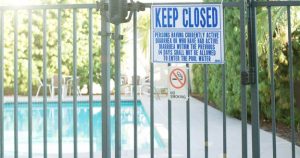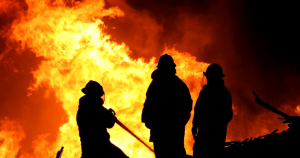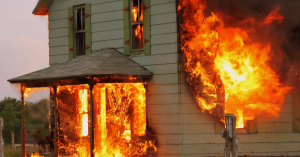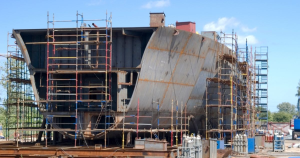Fire Watch Requirements: Essentials to Ensure Safety and Compliance
Discover crucial fire watch requirements to enhance safety and meet compliance standards. Learn how to ensure your safety measures.
A fire watch is a temporary measure to ensure safety in hazardous building conditions and to address property hazards, allowing continued occupancy during repairs or safety improvements, even in potentially dangerous conditions, without performing firefighting duties.
At The Fast Fire Watch Company, we deliver specialized fire watch services tailored to the unique needs of the maritime industry.
We are all over the West coast and we provide NFPA and OSHA-compliant fire watch services to protect vessels, ports, and offshore facilities.
Let’s investigate what fire watch requirements are, as there is a common misconception about their importance.
OSHA Fire Watch Requirements
Worker safety in hot areas is important, and it’s crucial to notify building occupants about potential hazards.
Understanding the OSHA fire watch requirements is too, especially following the latest safety guidelines.
These are the fire watch requirements:
- Keep yourself and all employees alert. They should know the exact location of firefighting equipment necessary in the event of a fire.
- It’s important to maintain very clear and constant lines of direct communication among workers who may need to perform firefighting duties.
- As much as you can, maintain visual and voice contact with employees in hot areas.
- During shift changes and even before, inspect the entire work area. Always look for the potential of fire. This includes the release of flammable liquids or vapors.
- You have the equipment. Be ready to use it at any time. Be sure it’s all in working order as well.
A faulty fire extinguisher, hydrant, hose cart, or fixed monitor does no good if it doesn’t work properly when you need it most.
- Absolutely never abandon a job site while hot work is happening. If you must leave, then stop the job. Let the workers know you are “standing-by-for.”
- Before you leave the hot area, double-check a few things. No burning embers, hot sparks, or other fire hazards should be present.
- Return all firefighting equipment to its safe location at the end of the workday.
Fire Watch Procedures
- Monitor all hot work in your facility. Beyond that, look for fire hazards across the entire workplace.
- Shut down all operations if you discover a fire hazard without a fire watch.
- Read your safety permit carefully. Assure that all conditions and requirements are maintained.
- Make sure to keep flammable materials away from the ignition sources.
- Immediately turn the fire alarm on in the event of a fire. Extinguish the fire if possible.
- Call 911. In some cases, you may have a different emergency alarm number. Be aware.
- Fire watch personnel must continuously patrol the entire facility or affected area.
Who Conducts a Fire Watch?
Fire prevention systems can fail you at any point.
When they do, it’s important to have a fire watch plan in place, especially if relying on water-based systems.
These policies can be complex because of the many AHJs (Authority Having Jurisdiction) that need to be notified.
It’s also advisable to consider business interruption costs and legal liabilities when making such a policy.
Fire Watch Requirements
The NFPA specifies a fire watch if the sum of all fire protection system outages exceeds four cumulative hours in a 24-hour period.
- Impaired System Tag Requirements /System Out of Service Fire protection system(s) that are impaired for any length of time shall be tagged with an impairment tag.
The tag or label shall be:
- Clearly visible, weather resistant, of sufficient size (typically 4 inches x 6 inches) and be of the self-adhesive type or the wire-hanging type.
The tag shall include the following information:
- The words “DO NOT REMOVE BY ORDER OF THE SYRACUSE FIRE DEPARTMENT.
- Name, address and telephone number of the business or firm performing the testing.
- Date that work was performed.
- Printed name of person performing work.
- Description of work performed.

- Fire watch personnel shall have access to at least one approved means of communication; know the exact address of the property; and know the procedure to report a fire or other emergency condition by calling 911.
- If more than one person is conducting a fire watch, they must be able to communicate with each other (either a cell phone, portable radio, or phone line is acceptable)
- Fire watch personnel shall be familiar with the layout of the buildings and property.
They shall become familiar with all electrical shut-off devices and main power cut-offs and any other areas that may be hazardous to responding fire service personnel.
- Fire watchers must know the location of fire extinguishers, sprinkler system controls, hose connections and all fire protection equipment in the structure or site.
- Fire watch personnel must have a written plan for patrolling the property.
- Fire watch personnel shall be made familiar with any pre-emergency plan and emergency plans that exist for the structure. They must know their responsibilities under any emergency plan in effect.
- Periodic patrols must be conducted throughout the entire facility. Patrols must occur every 15 minutes if the facility has people sleeping, is an institutional facility or is an occupied assembly facility.
- A facility not meeting the previous conditions shall be patrolled at a minimum every 30 minutes.
- The first round of fire watch should begin as soon as possible. During the rounds, the fire watch should make a thorough inspection of the building or spaces assigned to him/her, noting the following at a minimum:
- Portable fire extinguishers are in place, unobstructed and in proper operating condition.
- Corridors and exits are free and clear of storage and all other obstructions.
- Exit and stairwell doors are clear and fully operational.
- EXIT signs are visible and properly illuminated.
- Fire doors, smoke barrier doors and hazardous area doors are kept closed and latched (i.e., not tied, wedged or blocked open in any fashion)
- Electrical hazards are promptly reported and remedied.
- Trash and other unnecessary accumulations of combustibles are promptly removed from the building.
- Fire watch personnel shall report promptly any condition that needs immediate attention; the management should correct reports of this nature immediately.
- Fire watch personnel shall not be permitted to perform any other duties while on duty.
- Fire watch personnel shall not be impaired and shall remain awake and alert.
- If fire watch personnel discover a fire, their first response is to notify the Fire Department by calling the 911 Center. Fire watch personnel will be required to report on the exact location of the fire and the extent of fire involvement.
- Property owners shall keep a log of fire watch-related activities. The log shall include the address of the facility, the time of each patrol and the name of the fire watch person. A log must be maintained during the fire watch that is always available to the Fire Department.
- The building owner must notify the local Fire Department after a fire watch has been ended. Fire watch personnel do not perform firefighting duties beyond what is expected of regular staff.
Conclusion

These requirements help fire watchers keep track of their surroundings and improve record keeping.
So, if you need reliable support for keeping your company or premises free from fire hazards.
The Fast Fire Watch Company is here for you.
At The Fast Fire Watch Company, we can help you create a policy that the building owner can implement regarding the fire alarm system and local authority regulations and ensure compliance with fire watch responsibilities that adhere to NFPA requirements.
Get in touch with our fire safety experts to learn more.













